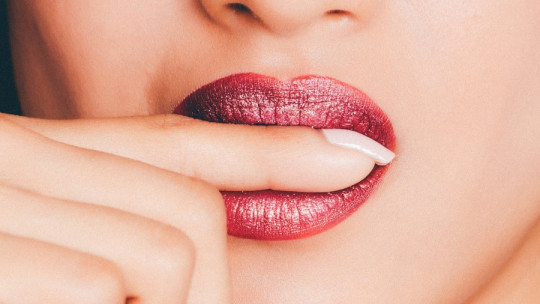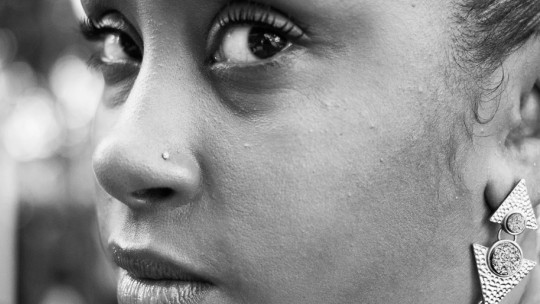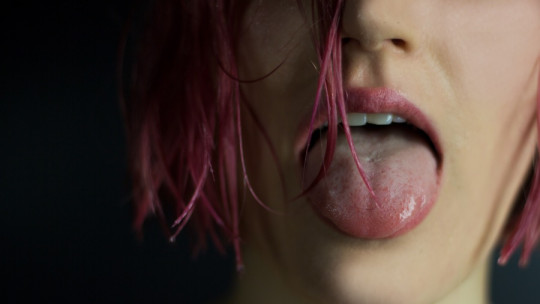Dermatophagia is a psychological disorder that involves biting the skin Normally, what the person with dermatophagia bites is the skin that surrounds the nails (around the fingertips), although there are also cases in which the person bites the lips and the inside of the mouth.
These small injuries that cause bites end up causing redness of the skin, which can bleed, and the appearance of wounds. In this article we will learn about the symptoms of dermatophagia, the consequences, causes and treatments.
What is dermatophagia?
Dermatophagia is usually associated with people with a rather nervous and/or anxious temperament; It is also related to states or moments of tension and stress. Besides, presents characteristics of the obsessive-compulsive spectrum and impulse control disorders
That is, it is a disorder with three types of symptoms or components: those related to impulse control, anxiety, and obsessive-compulsive symptoms.
Symptoms
These are the main symptoms and signs of dermatophagia.
1. Impulse control: impulsivity
Dermatophagia is related to impulsivity and impulse control. An impulsive act involves not being able to resist the temptation to perform a certain action as well as its consequent relief and sensation of pleasure that the person experiences.
Impulsive behaviors are also related to not thinking about the consequences of our own actions; That is, it would be something like “acting without thinking.” So, impulsiveness means losing control and it can cause us to make mistakes on a larger scale, reaching the extreme case of hurting someone.
In the case of dermatogamy, the direct consequences of biting behaviors affect the individual who suffers from the disorder.
2. Anxiety
Anxiety is also very characteristic in people with dermatophagia. Isolated episodes of anxiety may appear (as triggers for impulsive skin-biting behaviors), or that biting behaviors appear within a more global anxiety disorder (e.g. Generalized Anxiety Disorder, social phobia, separation anxiety disorder, etc.).
Thus, when the person feels this internal restlessness, along with nervousness and the physiological symptoms of anxiety, will seek to alleviate that state through impulsive action (or compulsive, as we will see later), biting the skin. That is, it would be a kind of maladaptive coping mechanism, since the subject ends up harming himself.
3. Obsessions and compulsions
Dermatophagia has also been related to Obsessive-Compulsive Disorders (OCD) and related disorders (a group of newly created disorders in the DSM-5). However, it does not really belong to this category within the manual, although perhaps we could place it in the subcategory of “Other OCD and related specified/unspecified” (where disorders that do not meet all the guidelines or criteria to be diagnosed with OCD are grouped).
It does appear in the DSM-5, however, excoriation disorder, a similar disorder but which we should not confuse with dermartophagia; In it, the person scratches the skin (not bites it).
Thus, continuing with the spectrum of OCD, it is true that we can find obsessive behaviors in dermatophagia; For example, it is possible that the person has certain recurring “negative” images or thoughts in the mind (obsessions) that cause a state of anxiety, and that leads them to carry out the behavior of biting their skin.
In this case, said behavior would be similar to a compulsion, or at least it would perform its function, that of reducing the person’s state of anxiety).
Causes
Generally, dermatophagy It originates as a consequence of moments of stress and the need to face these moments coupled with a lack of adaptive coping skills.
Thus, a person who, when faced with moments of nerves, uncertainty, discomfort, stress, etc., chooses to bite the skin that surrounds the nails (or other areas of the body such as the mouth), and ends up doing this systematically during moments of stress, you may end up “learning” to respond in this way (according to behavioral theories).
But how do you learn behavior like this? Through reinforcement; That is, these behaviors typical of dermatophagy would be reinforced by the pleasure that the person feels when “discharging” tension through the action of biting oneself
Thus, the succession of actions/states would become the following vicious circle: stress situation → biting the skin → feeling pleasure → reinforcement of the action (and starting again).
However, sometimes the person does not seek to feel that “pleasure”, but rather the opposite; feel pain. Thus, another possible cause of dermatophagia is related to emotional pain that the person is feeling; To combat it, it would choose to bite the skin and generate physical pain that would allow him to defocus from the emotional pain It would be a type of self-harming behavior, although not with the real purpose of harming oneself, but rather to “distract” oneself from pain or emotional discomfort.
Consequences
If these behaviors continue over time, injuries to the skin, mouth and fingers may become increasingly important.
Furthermore, if dermatophagia is not stopped, the person has the risk of assuming this stress coping strategy as the predominant one and that would prevent him from developing truly adaptive and functional strategies (such as using breathing techniques to calm down, relaxation exercises, playing sports, etc.).
Treatment
The psychological treatment of dermatophagia will focus on finding alternative behaviors that are incompatible with skin biting. Behavioral treatment may be useful in cases of dermatophagia; that is to say, use behavior modification techniques that allow the elimination of inappropriate action and the establishment of appropriate behavior.
1. Incompatible behaviors
To apply a technique that seeks to establish an incompatible behavior, it will be important to first detect when, how, and under what background the skin-biting behavior develops. Once the applied behavior analysis has been carried out, we will be able to know the antecedents prior to the appearance of the unwanted behavior (for example when the parent scolds the child and the child feels tense, or when one feels anxious about another specific situation. ).
Knowing the antecedents will allow us to prevent the behavior In the event that it cannot be prevented or there are difficulties in doing so, the choice will be to look for an incompatible and alternative behavior, as we said (for example, using the hands to perform another action, or the mouth, avoiding the bite).
It often happens, and especially in children, that it is difficult to eliminate a behavior if another is not established in its place. Let’s think for example about people who smoke; Very often these people choose to chew gum, eat candy, smoke electric cigarettes, etc. (they are alternative and incompatible behaviors).
2. Psychoeducation
In addition to all this, it will also be indicated to treat dermatophagia. educate the patient in alternative and functional coping strategies (psychoeducation), to be able to apply in moments of stress.
As we mentioned before, some of them may be: breathing techniques, relaxation techniques, playing sports, doing yoga, leaving the stressful situation and finding a quiet place, etc.
3. Psychotropic drugs
Finally, you can opt for the use of anxiolytic drugs (or antidepressants, in the case of comorbid depression) to alleviate anxious or depressive symptoms, but pharmacological treatment should always be considered as a rather specific alternative, and always complementary to psychotherapeutic intervention.
In the end, the important thing will be to resolve the situation in the long term and produce deep and lasting changes, and that can only be achieved through adequate psychological therapy.











